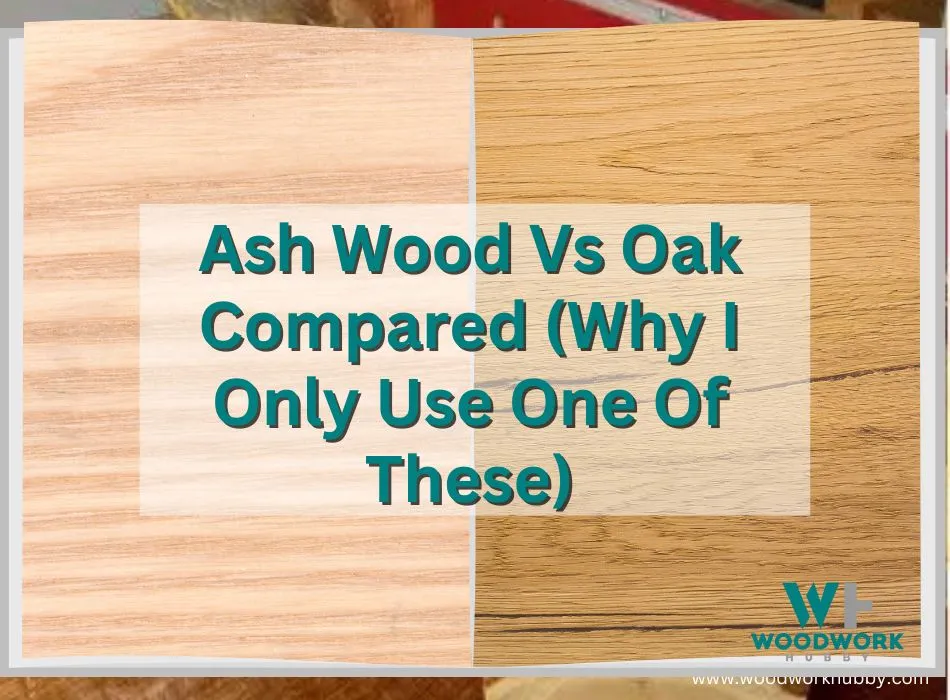I have spent more time squinting at Ash and Oak at my local lumberyard than I am proud to admit. The wood seems similar in strength and even appearance, at least initially. But having tried both for different projects, I have found Oak to fall short in many ways.
Ash wood is better than Oak in terms of strength, impact resistance, and machinability, while Oak is more compatible with different types of backdrops and themes, making it more conventionally attractive. Ash wood is also generally cheaper.
In this article, I will discuss the pros and cons of Ash wood and Oak and explain why I usually choose Ash over Oak. You will also find instances where Oak outperforms Ash. By the end, you will know exactly which wood you should get for your project and how you can tell it apart. But first, let’s look at a quick comparison of the two.
| Aspect | Ash Wood | Oak |
|---|---|---|
| Pattern | Single-path grain | Radial Pattern |
| Hardness | 1,320 lbf | 1290 lbf (red oak) |
| Best Use | Flooring | Decorative Furniture |
| Worst Use | Roof Shingles | Tool Handles |
| Relative Pricing | Generally Cheaper | Slightly more expensive |
Ash Wood: A Brief Overview
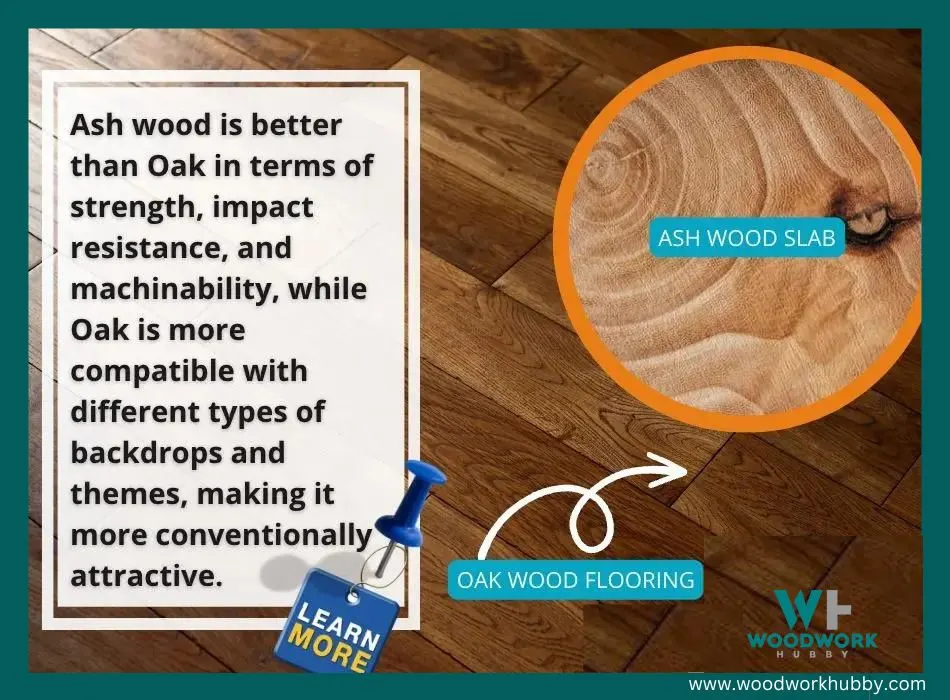
Ash wood is sourced from Canada and the eastern coast and is one of the cheapest domestic hardwoods. It is used in load-bearing, impact-facing, and construction projects. It even derives its name from one of its uses. “Ash” is another word for spear, which was something usually made from Ash in the old days.
| Pros of Ash wood | Cons of Ash wood |
|---|---|
| Ash wood is more impact-resistant than Oak | It is not considered as aesthetic as Oak |
| It is cheaper than Oak | Ash wood doesn’t complement all types of backdrops |
| It has high machineability | It can incur water damage and may rot |
| It lasts longer than Oak in high-traffic applications | It is difficult to source in some parts of the country |
Oak: A Brief Overview
The Latin word for oak literally translates to “hardwood.” Oak is one of the most popular and commonly used hardwoods because it balances a fine appearance with an accessible price point. White and Red oak are the most common types of oak, with white oak being harder than common Ash and Red oak being slightly less so.
| Pros of Oak | Cons of Oak |
|---|---|
| It has an attractive wood grain | It cannot stand up to impact as well as Ash |
| Oak is less likely to warp in the sun | Oak is slightly more expensive than Ash |
| It is durable and long-lasting | Oak cannot be machine molded for curved veneers |
| It is compatible with different backdrops | It can incur wear and tear quicker than Ash |
A video showing the difference between oak wood and ash wood.
Is Ash As Good As Oak?
Ash is as good as Oak in its durability and resilience, if not better. However, it isn’t as aesthetic or conventionally good looking as Oak, which is why Oak is preferred over it in prestige furniture buildings.
Beauty, however, is subjective and context-specific. In darker backdrops, Ash wood can outshine oakwood. But Oak’s grain pattern has a wider appeal and you’re more likely to impress your guests with Oak furniture.
Is the aesthetic appeal of wood all that matters? Not by a long stretch. Ash is better than Oak at standing up to rough and frequent use. It can absorb impact better and has great machinability. So there are aspects in which Ash outperforms Oak, but within the context of furniture and decor, Oak is better than Ash.
I did some tests on using Danish oil on Oak veneer doors.I did some tests on using Danish oil on Oak veneer doors.
Is Ash Good Quality Wood?
A wider range of people prefers Oak over Ash, which might make you doubt Ash’s quality. It is true that Ash is not as popular as oak, but that doesn’t represent its quality.
Ash is a good quality wood belonging to the same category as Oak. Both are hardwoods known for their dense make and hardness, which can help them last long despite rough handling, high weight load, and frequent use.
Ash wood might be as good-looking as Walnut or Mahogany, but it has a decent appearance that can be enhanced with the right finish. Ash has been historically used in spears and, more recently, in baseball bats and hammer handles.
None of these applications can work with low-quality wood. So, even Ash’s common use cases point towards how good it is in quality and reliability.
In my two decades of woodworking, I have learned that use cases of wood can tell much more about timber than any description. You can find out not just the extent of the wood’s resilience but also exactly how you can use it. Whenever you’re looking to purchase any type of wood, ask yourself what its common uses are.
If you are into wood carving, you may want to read the article 10 things you need to know about wood carving using Ash Wood.If you are into wood carving, you may want to read the article 10 things you need to know about wood carving using Ash Wood.
What Is Ash Best Used For?
Ash wood is best used for flooring, stairs, and load-bearing frames because it is very shock-absorbent and hard. White Ash’s Janka hardness is 1,320 lbf which qualifies it as a hardwood. That means it can be used in most weight-bearing applications.
Let’s look at the different uses of Ashwood compared to their respective reasons.
| Use of Ash wood | Possible Reason |
|---|---|
| Hardwood Floors | Ash can handle a lot of traffic |
| Timber Frames | Ash can bear load in excess of most hardwoods |
| Tool handles | Ash is resilient and not brittle, making it good for impact and swinging |
| Staircases | Ash’s ability to handle traffic and weight makes it perfect for staircases. |
| Treads | For the same reason, Ash works great for stairs |
| Moulding | Ash’s machinability makes room for curvature. |
What’s interesting about the above use cases is that Oak is inferior to Ash in these contexts, despite being perceived as generally better.
If you’re looking for wood to build interior decor and furniture projects, go with Oak, but if you want wood for your stair treads, molding, tool handles, or flooring, you better know how to tell Oak apart from Ash.
How can you tell Oak from Ash?
You can tell Oak from Ash by observing the grains on both timbers. Oak has an uneven texture and is straight-grained alongside a radial pattern. In contrast, Ash has a very balanced texture with a smooth grain and single-path pattern. Ash doesn’t have visible parenchyma, while Oak cross-cuts often have it.
This video tells you how you can tell the trees apart.
A video telling how you can distinguish ash wood to oak wood.
If a block of wood is suspected to be either oak or Ash, start by looking for a radial pattern. In case the wood has only a one-way pattern on each side, it might be Ash. But if it has a radial pattern, then it is definitely Oakwood.
You might want to find out whether a lumber sample is oak or Ash because you’re interested in Oak only or Ash only. There are various reasons to lean towards either choice.
For instance, if you want wood that can be curved with machine manipulation, then you have to look for an absence of parenchyma and radial patterns because Oak will fail you. Ash has higher machinability and is better for molding and curving.
It is also possible that you don’t need wood for a very niche project. You’re just looking for hardwood, and Oak and Ash are comparable in strength. That’s when the cost factor becomes relevant.
Which Wood Is More Expensive – Ash Or Oak?
Oak is generally more expensive than its equivalent in Ash. However, red oak can be slightly cheaper than white Ash in some regions based on availability. The prices of the two hardwoods are close enough to make budget factors irrelevant.
Generally, the decision between Oak and Ash is made based on the availability of the wood and its compatibility with intended projects. In rare cases, it is possible to get Ash in bulk at a significantly cheaper price point. But most often, the money you save choosing Ash over Oak might not be worth it if Oak is the better wood.
As mentioned earlier, Oak can be better than Ash and vice-versa depending on what you want to use the wood for. Knowing which wood is stronger, better looking, and best used for different applications is critical to making the right choice.
Which Wood Is Stronger – Ash Or Oak?
Ash is stronger than Oak in general, but some species of Ash are softer than White Oak. For most construction purposes, Ash lumber is sturdier than Oak, which is best reserved for furniture building and interior decor.
Which Wood Is Better Looking? – Ash Or Oak?
Oak is better looking than Ash for most people. However, beauty is subjective, and you might find Ash to be more visually appealing than Oak. Still, Oak’s grain pattern has more variation, and it has a warmer appearance which fits interior projects.
Is Ash Or Oak Better For Furniture?
Oak is better for decorative and high-visibility furniture because of its aesthetic grain pattern. Ash is better for furniture that is meant to carry heavy weight or be used regularly since it can resist impact and persevere despite regular use.
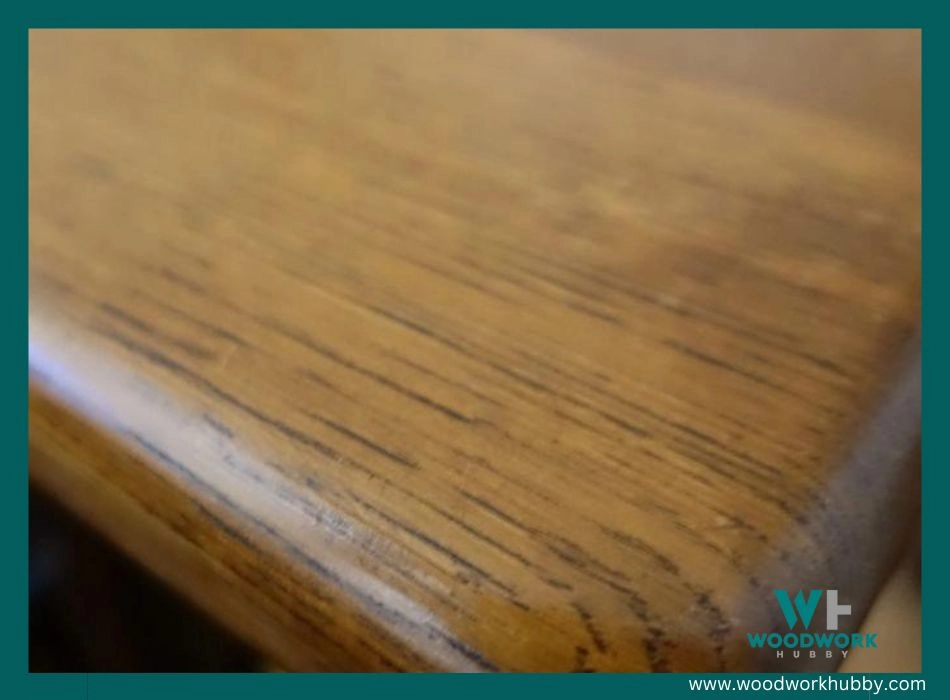
Ash vs. Oak Flooring – Is Oak Or Ash Better For Flooring?
Ash flooring lasts longer than oak flooring because of Ash’s ability to tolerate impact. Since both Oak and Ash have comparable hardness, the overall wood selection doesn’t impact flooring function.
You can choose Oak or Ash for wood flooring and have a functional floor. The choice, then, has to be about the longevity of the flooring and its appearance.
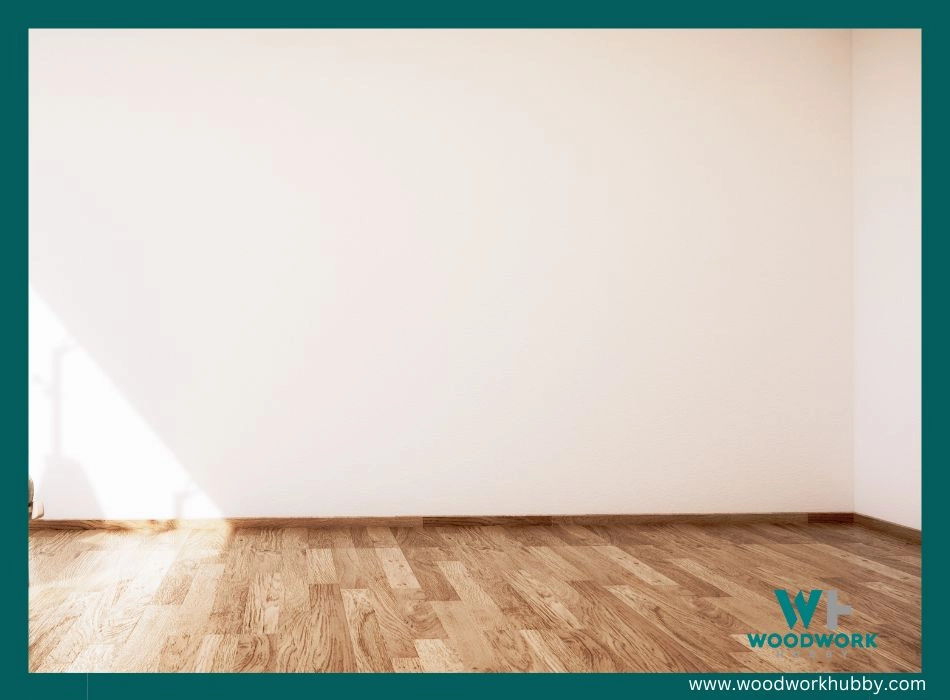
If you use Oakwood for your flooring, you might need to take extra measures to make it last longer. This can include using a carpet or implementing an indoor slippers policy. I must mention that this borders on being too cautious.
Oakwood floors are pretty strong and pretty common. They can survive standard use and can wear out quickly if used as a running track by pre-teens with chunky sneakers.
If you use Ash, you can be less stressed about maintaining the floors because there’s a slight bounce to the wood that keeps it from incurring structural damage under heavy feet.
With the structural durability covered, the only relevant differentiator that’s left is the appearance. Since people have different tastes, it would be unfair for me to declare one wood as better for all types of floors. Here are my recommendations for Ash and Oak when trying to achieve different aesthetics.
- Choose Ash for a natural-looking floor with a lighter hue.
- Choose white oak for a floor with less obvious grain and wider compatibility with all types of interior items and themes.
- Choose red oak for a more traditional-looking floor with a warm hue and a conventional aesthetic. It goes well with prestige furniture.
The natural appearance of the wood is a great starting point. You can also use finished wood to look better and be more durable. Different types of wood are elevated to different extents after finishing.
Which Wood Finishes Better – Ash Or Oak?
Ash finishes better than Oak since Oak’s tannin content can react with oils and change the appearance of the finish. Ash lets the finish alter its hue as intended. It stains well too, which is why it can be considered more malleable in appearance.
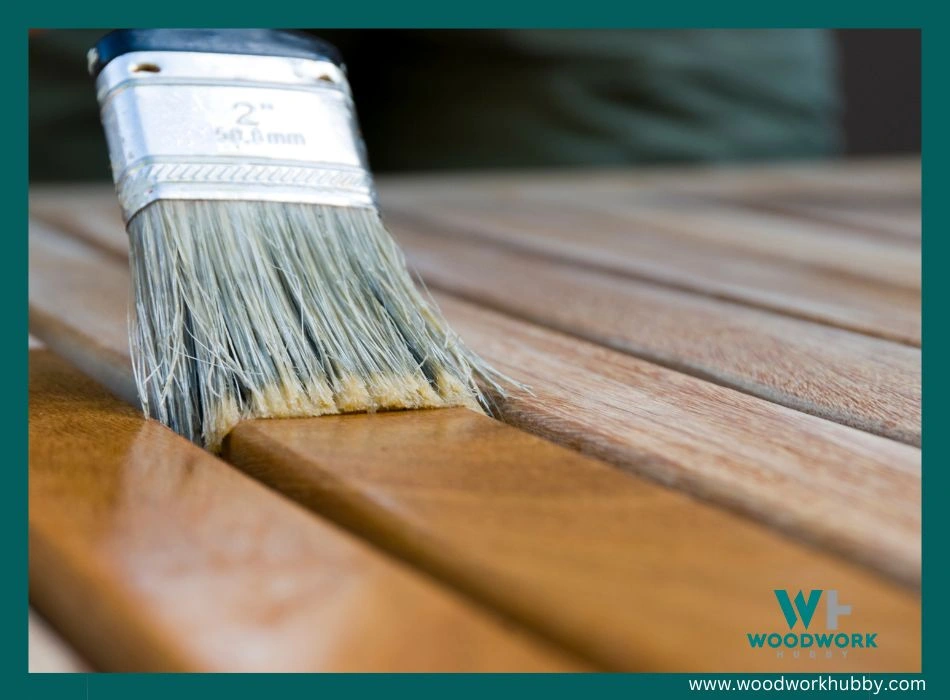
Let’s suppose that you like Ash’s qualities but just don’t like how it looks. As long as you don’t mind having a stained wood floor or furniture, you can use stain to make Ash appear the way you want it to appear.
Oil finishes can introduce warmth to Ash wood, while the grain of the wood can still remain visible if the coat isn’t opaque. Oakwood can be stained and finished, but you need to sand it, so its pores open up.
Final Thoughts
I have chosen Ash over Oak over and over again. But my needs and preferences aren’t yours, so let’s conclude this with the facts: Ash takes impact better than Oak and it is generally harder and cheaper than Oak as well.
Oak, on the other hand, looks better in a wide range of settings, which is why it is often used in furniture.

